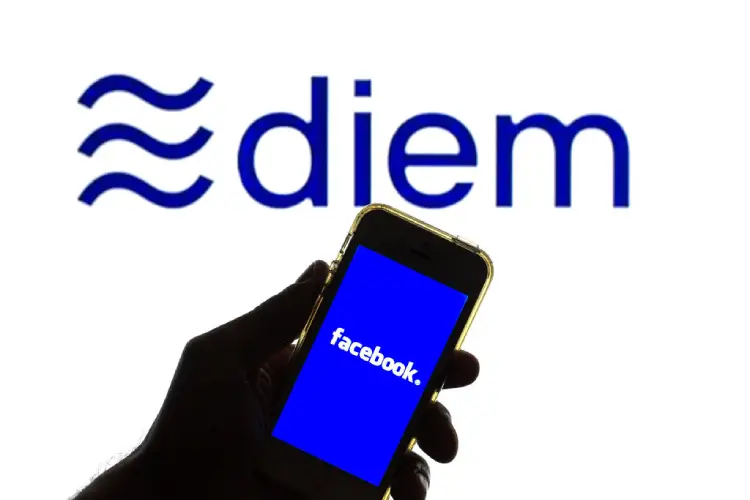
Diem, the digital currency project led by Facebook’s parent company Meta, has been cancelled, ending months of speculation about the stablecoin’s future. Meta and its partners have pulled the plug after running into significant opposition from regulators and politicians. And though many of these relate to Facebook’s reputation, whether other stablecoins can succeed as a viable method for consumer and business payments is questionable, particularly as central banks move to develop their own digital currencies.
Assets belonging to Diem are being sold off, it was widely reported this week, with the Wall Street Journal claiming that the Silvergate Bank is buying the currency’s underlying technology for $200m. Meta and Silvergate both declined to comment.

Facebook launched the Diem Association, then known as Libra, in 2019, with the support of a variety of partners including Visa and Mastercard, as well as tech companies such as Lyft and Spotify, in 2019. It had been hoping that getting into payments would provide it with a fresh income stream, but questions about the social network’s involvement led to several of the founding partners pulling out.
The name Diem was adopted in December 2020 in a bid to show the currency would be independent from Facebook, but this failed to provide fresh impetus, and now the project has been spiked for good.
The Diem demise: a Facebook problem or a stablecoin problem?
Diem would have been a stablecoin, a type of cryptocurrency which has its value attached to the performance of a conventional fiat currency such as the US dollar. This means that it can avoid the fluctuations in value which characterise popular cryptocurrencies such as Bitcoin, while still maintaining the privacy and instant payments which cryptocurrencies offer. A ‘reserve’ of fiat currency equivalent to the amount of stablecoin in circulation is held by the issuer as an additional level of security.
By developing Diem as a stablecoin, Facebook parent Meta and its partners had hoped to give consumers and businesses more confidence that they could use it without putting their assets at great risk. They initially planned to attach the currency to a number of different assets around the world, before changing this so it would just be pegged to the dollar.
Regulation of stablecoins remains limited. In November a report from the US President’s Working Group on Financial Markets called for new rules for the currencies, citing fears they could otherwise be used to avoid anti-money laundering rules and to finance terrorist groups. The report recommends regulating stablecoins in the manner of a traditional bank.
Meta’s role in the development of Diem was also questioned by politicians, with members of Congress suggesting the company’s size and reach could mean Diem would emerge as a rival to the dollar, and raising the scandals that have dogged Facebook in recent years over data protection and selling of customer of information to third parties.
Facebook completely screwed this up, from the very beginning.
Norbert Michel, Cato Institute
So has Diem failed because of Meta’s involvement? Or because of underlying issues with stablecoins? Norbert Michel, vice president and director of the Cato Institute’s Center for Monetary and Financial Alternatives, is unequivocal that the blame lies with Mark Zuckerberg and Co. “Facebook completely screwed this up, from the very beginning,” he says. “They ignored the regulatory issues as well as the political implications of what they were doing, and it cost them dearly.”
Professor Ganesh Viswanath-Natraj, assistant professor of finance at Warwick Business School, agrees. “Facebook’s reputation, and its perceived inability to maintain the privacy of its users, has been the main problem here,” he says. “I’m not surprised by this outcome.”
What is the future for stablecoins?
Stablecoins are already widely used in the cryptocurrency ecosystem, often acting as a so-called ‘vehicle currency’, a stable intermediary for users wanting to trade fiat currencies for cryptocurrencies and vice versa. Tether, which is based on the Ethereum blockchain, is the most popular example of a stablecoin. “There are a lot of use cases for stablecoins, but they’re mainly in the crypto-sphere,” Professor Viswanath-Natraj says. “They’re mainly used as a vehicle currency in the crypto market and it’s a function they perform extremely well.”
Diem was an altogether more ambitious project, and Professor Viswanath-Natraj says stablecoins require much more support from the banking system if they become more widely used. “If you had that support, safeguards for reserves, and insurance, I think in principle you would get regulatory approval for a project like Diem,” he says. “But then you’re essentially creating a central bank digital currency (CBDC), only with a third-party holding the funds.”
Indeed, central banks around the world are developing CBDCs, their own digital currencies which they hope will give citizens a reliable way to make digital payments, in part as a response to the emergence of stablecoins. Consultation on a CBDC for the UK, the so-called ‘digital pound’, is set to commence this year.
Professor Viswanath-Natraj says that, if stablecoins are to emerge as a realistic alternative option for payments, they will probably have to be driven by the financial services sector rather than Big Tech companies like Meta. “For something ambitious to happen it will have to come from within the banking system,” he says. “I’m still not sure if it would be more beneficial than a CBDC, which is always going to be a bit safer because it has the direct backing of the government, whereas private stablecoins could always encounter ‘bank run’ risks, where there are not enough reserves to meet deposited demands.”
But, he says, “you could get around all that with the support of regulators, but Facebook never had that for Diem because of its own problems.”






